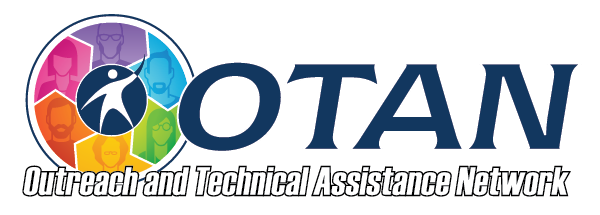Ways to Engage Social and Emotional Learning (SEL) for All Learners
by Elisia Doonan, OTAN Subject Matter Expert
This article explores the importance of engaging socially and emotionally for all learners with a focus on SEL lessons threaded into adult education. In my experience with working with learners, the most important lesson learned was self-confidence and self-esteem. One of the ways the components of SEL is important to us as educators is to help foster and build an inclusive and equitable community. Community building is an important aspect in helping to create a positive, safe, and supportive classroom. This article focuses on the ways in which we can create such an environment through digital and technological enhancements.
What is Social Emotional Learning, or SEL in Adult Education?
Social and emotional learning (SEL) can be defined as an internal part of not only education but humanity. SEL is a process through which learners in any age and variation can acquire and apply knowledge, as well as skills. Applying SEL in adult education can lead to further development of healthy relationships, management of emotions, feeling and showing empathy for others, as well as establishing and maintaining supportive relationships.
Challenge Areas
Two common challenge areas that I have found are fostering an environment which builds active listening skills and problem solving in a digital environment. Through the years, I’ve learned how to support students by overcoming these barriers.
Building active listening skills can be difficult because learners can get distracted. Many learners want to just blurt out answers, walk out, or possibly be disruptive. Including all learners in an activity can start the feeling of confidence. Confidence is one of the key elements in SEL. As learners gain confidence with active listening, they can learn skills in problem solving also.
Ways to incorporate SEL into intentional class activities:
Incorporating SEL into lessons can include social greetings with an objective for the day stating what we will learn and summarizing what we did. The use of digital tools provides flexible options for enhancing communication, participation and knowledge, thus making my students more confident individuals. In the digital format, communication may be audio, text or video based. I try to incorporate all formats.
- Active Listening
Learning Objective
- – Learners will take turns with a warmup activity.
- – Learners will participate with non-verbal/verbal signals when needed.
Method of Assessment
- – Learners will participate with communication, head nodding or raising their hands.
How do we put this skill in motion? Here’s an example of an activity incorporating Active Listening Skill.
People Bingo

Plan of Instruction
- The instructor will introduce People Bingo- an activity to get to know people in your class.
- The instructor will have several different game cards with assorted questions, such as
- Prompt: My favorite movie
- Answer: I love thriller movies
- Prompt: Favorite color
- Answer: I own a car,etc.
- Some variations to consider
- Instructor can pass out markers, pencils for learners to fill in information on Bingo card.
- Instructor can make this a timed activity .
- Learners can be paired up to work on the activity together.
- Instructor can help learners when needed.
- Learners can ask each other questions to fill in their BINGO card to win!
- Instructor can make this a timed activity .
- Depending upon literacy, learners may just ask a question, what is your favorite dessert, sport, color to each other.
- Instructor can also choose this activity individually or as a class project.
Follow Up
Instructors will try to engage all learners in activity. The use of active listening will be reinforced through demonstration of turn taking and questions from other learners when needed. Instructors can reinforce active listening for group/teamwork, job/volunteer environment, and social activities.
Another way to include active listening is to ask learners what they learned about another student in their class. This will demonstrate the use of active listening.
Looking for additional activities to help, include active listening skills? See below:
Adult Ice Breaker Games for Classrooms, Meetings, and Conferences
- Practicing Collaborative Problem-Solving
Learning Objective
- – Learners will participate in critical thinking and problem solving.
- – Learners will participate with non-verbal/verbal signals when needed.
Method of Assessment
- – Learners will participate with communication, head nodding or raising their hands or via digital devices.
How do we put this skill in motion? Here’s an example of an activity incorporating problem-solving in the classroom.
Plan of Instruction
Using Kahoot! (a web-based platform in which students respond to a prompt that the instructor creates) we can incorporate problem solving skills.
Here is an example of a Kahoot question that I used in my class. It was from our morning activity. You can see the correct answer.

Kahoot is a great resource for Instructors to engage learners in problem solving.
You can set up teams, work individually or just as a group. In Kahoot you can set up your own topic that you wish to work on. Just remember, this activity may take a few times for all to get used to, patience is the key.
One of the resources that I’ve learned to utilize is Teaching with Technology (TwT). This resource has not only provided guidance and connected me with third party platforms such as Kahoot, but it also links additional programs.
For further information on incorporating Kahoot into your classroom environment see below:
Outreach and Technical Assistance Network | Kahoot!: Fractions, Decimals & Percents
Follow Up
Instructors will try to engage all learners in activity. The use of problem-solving skills will be reinforced with each progressive question/slide. Instructors can reinforce problem solving via group/team and day to day situations. Problem solving skills can be built even if the incorrect answer is input. Instructors can work with their learners to help deduct the correct answer. There is an opportunity in every question asked!
In Summary
In researching SEL, these two skills can be a starting point for all learners. Building a supportive classroom will bring the learner not only confidence in their day-to-day life and activities but also provides the building block for strong mental health and well-being. Overall, by incorporating SEL into adult learning, we can create a more supportive and inclusive community of diverse learners.
Resources
- CALPRO Research Brief Supporting Student Success through Social and Emotional Learning?
- For additional guidance on accessibility resources you may find helpful when working with adult learners is Outreach and Technical Assistance Network | Accessibility Resources
- Want to understand more about SEL?
- To learn more about the ways SEL helps to provide community building and digital inclusivity see California Adult Education Digital Learning Guidance, Chapter 7, and Social Emotional Learning, (SEL)

